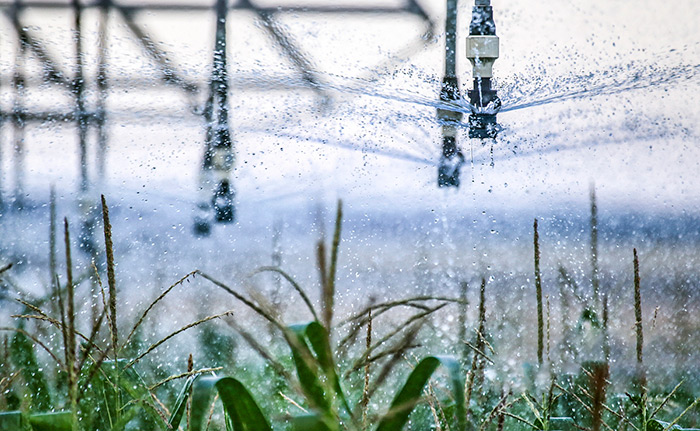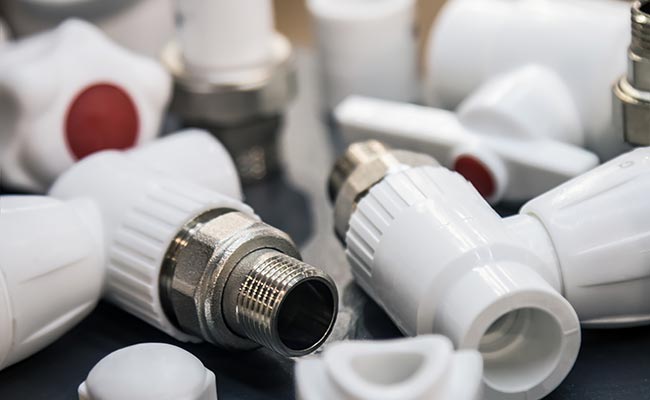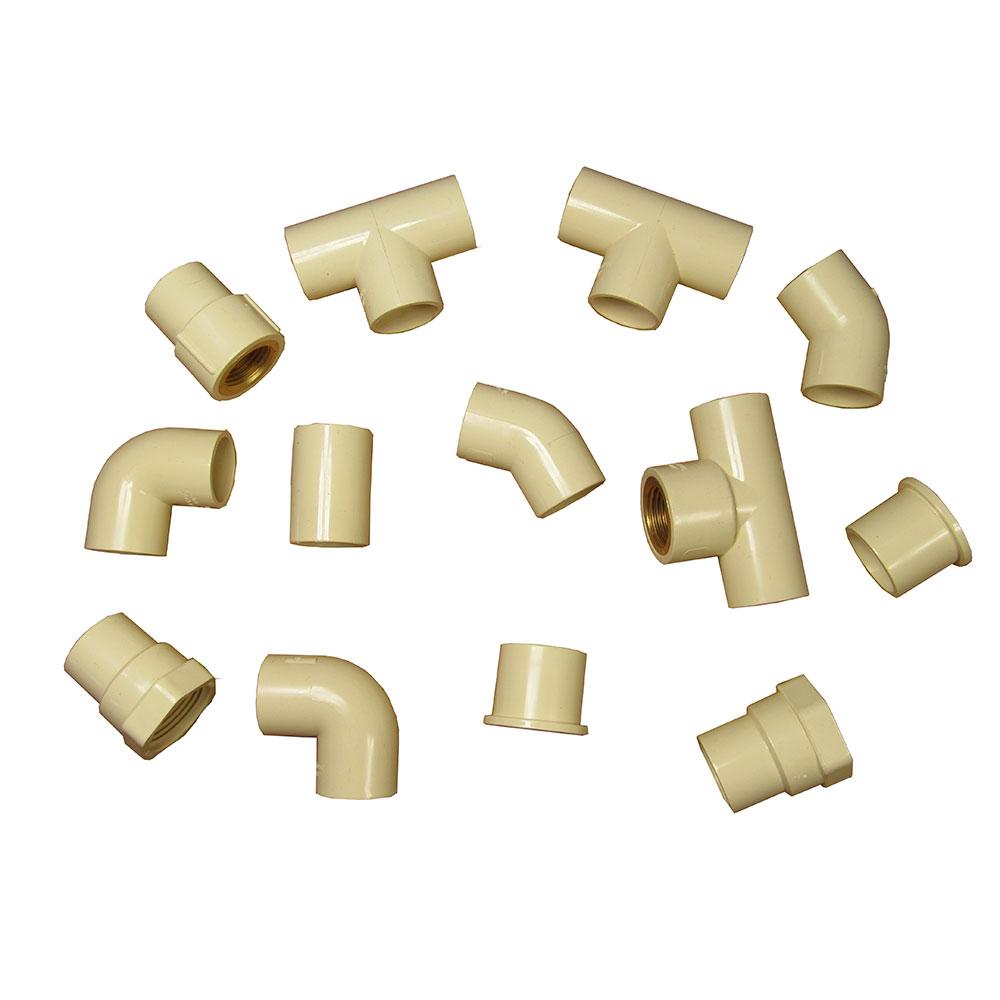
Ihmiset haluavat kestäviä lämminvesijärjestelmiä.CPVC-liittimetauttavat pitämään veden turvassa ja kuumana. Ne kestävät korkeita lämpötiloja ja estävät vuodot ennen kuin ne alkavatkaan. Asunnot luottavat näihin liittimiin, jotka tarjoavat vahvaa ja luotettavaa putkistoa. Kaipaatko mielenrauhaa? Monet valitsevat CPVC:n lämpimän veden tarpeisiinsa.
Keskeiset tiedot
- CPVC-liittimet luovat vahvoja ja tiiviit liitoksia, jotka estävät vesivahingot ja säästävät rahaa korjauksissa.
- Nämä liittimet kestävät korkeita lämpötiloja muodonmuutoksitta, joten ne sopivat erinomaisesti lämminvesijärjestelmiin.
- CPVC kestää kemiallista korroosiota varmistaen pitkäikäisen ja turvallisen LVI-järjestelmän koteihin ja yrityksiin.
Yleisiä käyttövesiputkiston ongelmia
Vuodot ja vesivahingot
Vuodot aiheuttavat usein päänvaivaa asunnonomistajille ja yrityksille. Ne voivat alkaa pienistä ongelmista, kuten tippuvasta hanasta, tai näkyä halkeamina putkissa. Ajan myötä nämä vuodot voivat johtaa vesivahinkoihin, korkeampiin laskuihin ja jopa homeen kasvuun. Home aiheuttaa terveysriskejä ja voi levitä nopeasti kosteissa tiloissa. Liikerakennuksissa vuodot voivat häiritä päivittäistä toimintaa ja aiheuttaa turvallisuusriskejä. Monet ihmiset yrittävät korjata vuotoja vaihtamalla termostaatteja tai lisäämällä eristystä, mutta nämä ovat vain väliaikaisia ratkaisuja.
- Vuotavat putket voivat aiheuttaa:
- Vesitahrat seinissä tai katoissa
- Lisääntyneet vesilaskut
- Home- ja sieniongelma
- Rakenteelliset vauriot
Perinteiset materiaalit, kuten galvanoitu rauta tai PVC, kärsivät usein vuodoista, erityisesti korkeissa lämpötiloissa ja paineessa. CPVC-liittimet taas kestävät korroosiota ja kalkkikertymiä, mikä auttaa estämään vuotoja ja vähentää huoltotarvetta.
Korkean lämpötilan muodonmuutos
Lämminvesijärjestelmien on käsiteltävä korkeita lämpötiloja joka päivä. Jotkin materiaalit alkavat pehmentyä tai muuttaa muotoaan, kun ne altistuvat lämmölle pitkään. Tämä voi johtaa putkien painumiseen tai jopa halkeamiseen. Alla oleva taulukko näyttää, miten eri materiaalit reagoivat lämpöön:
| Materiaali | Pehmenemislämpötila (°C) | Maksimi käyttölämpötila (°C) | Lyhytaikainen muodonmuutos (°C) |
|---|---|---|---|
| CPVC-liittimet | 93–115 | 82 | Jopa 200 |
| PVC | ~40 °C vähemmän kuin CPVC:ssä | Ei tiedossa | Ei tiedossa |
| PP-R | ~15 °C vähemmän kuin CPVC:ssä | Ei tiedossa | Ei tiedossa |
CPVC-liittimet erottuvat edukseen, koska ne kestävät paljon korkeampia lämpötiloja menettämättä muotoaan. Tämä tekee niistä älykkään valinnan lämminvesivaraajiin.
Kemiallinen korroosio ja hajoaminen
Lämminvesijärjestelmissä on usein kemiallisia haasteita. Korkean klooripitoisuuden tai muiden kemikaalien pitoisuus vedessä voi kuluttaa putkia ajan myötä. CPVC sisältää lisättyä klooria, joka parantaa sen kemikaalienkestävyyttä ja pitää sen juomaveden turvallisena.
- CPVC kestää korroosiota ja hankausta jopa vaativissa kuumavesiympäristöissä.
- Kupariputket kestävät myös pitkään ja kestävät korroosiota, mutta PEX voi hajota nopeammin klooripitoisessa vedessä.
CPVC:n ansiosta sekä asunnonomistajat että yritykset voivat olla mielenrauhalla tietäessään, että heidän putkensa kestävät sekä lämpöä että kemikaaleja vuosien ajan.
Miten CPVC-liittimet ratkaisevat kuumavesiputkiston ongelmat
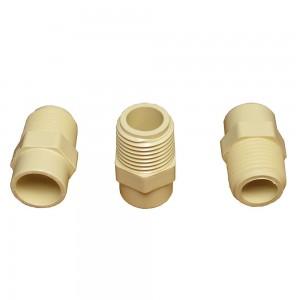
Vuotojen estäminen CPVC-liittimillä
Vuodot voivat aiheuttaa suuria ongelmia missä tahansa lämminvesijärjestelmässä.CPVC-liittimetauttaa pysäyttämään vuodot ennen kuin ne alkavatkaan. Näiden liittimien sileät sisäseinät pitävät veden virtauksen ilman ylimääräistä painetta. Tämä rakenne vähentää halkeamien tai heikkojen kohtien riskiä. Monet putkimiehet pitävät siitä, miten CPVC-liittimissä käytetään liuotinsementtiä vahvan ja vesitiiviin liitoksen luomiseksi. Hitsausta tai juottamista ei tarvita, mikä tarkoittaa vähemmän virhemahdollisuuksia.
Vinkki: CPVC-liittimien liuotinsementtisidokset tekevät asennuksesta nopeaa ja luotettavaa, mikä auttaa estämään vuotoja jopa piilossa olevissa tai vaikeasti tavoitettavissa paikoissa.
CPVC-liittimet kestävät myös syöpymistä ja kalkkiutumista. Nämä ongelmat johtavat usein metalliputkien reikävuotoihin. CPVC:n avulla vesi pysyy puhtaana ja järjestelmä vahvana.
Kestää korkeita lämpötiloja
Lämminvesijärjestelmät tarvitsevat materiaaleja, jotka kestävät lämpöä joka päivä. CPVC-liittimet erottuvat edukseen, koska ne säilyttävät muotonsa ja lujuutensa korkeissa lämpötiloissa. Ne on mitoitettu jatkuvaan käyttöön 82 °C:ssa ja ne kestävät lyhyitä, jopa korkeampia lämpöpurskeita. Tämä tekee niistä täydellisiä suihkuihin, keittiöihin ja kaupallisiin lämminvesiputkiin.
Alla oleva taulukko näyttää, miten CPVC-liittimet vertautuvat muihin yleisiin materiaaleihin:
| Materiaali | Lämpötilan kestävyys | Paineluokitus | Asennuksen helppous |
|---|---|---|---|
| CPVC-levy | Korkea (lyhytaikainen jopa 200 °C) | Korkeampi kuin PVC | Helppo, kevyt |
| PVC | Alentaa | Alentaa | Helppo |
| Kupari | Korkea | Korkea | ammattitaitoinen työvoima |
| PEX | Kohtalainen | Kohtalainen | Erittäin joustava |
CPVC-liittimet eivät painu tai muuta muotoaan edes vuosien kuuman veden käytön jälkeen. Tämä auttaa pitämään putkistojärjestelmän turvallisena ja luotettavana.
Kemiallisten vaurioiden vastustaminen
Kuumassa vedessä voi olla kemikaaleja, jotka vahingoittavat putkia ajan myötä. CPVC-liittimet tarjoavat vahvan suojan näitä uhkia vastaan. Todellisissa testeissä CPVC-putket toimivat täydellisesti rikkihappotehtaassa. Ne kestivät korkeita lämpötiloja ja kovia kemikaaleja vuoden ajan ilman ongelmia. Putket eivät tarvinneet lisäeristystä tai tukea edes pakkasella.
Yleisiä kemikaaleja kuumavesijärjestelmissä ovat:
- Vahvat hapot, kuten rikki-, suola- ja typpihappo
- Emäkset, kuten natriumhydroksidi ja kalkki
- Klooripohjaiset puhdistusaineet ja yhdisteet
- Ferrikloridi
CPVC-liittimet kestävät näitä kemikaaleja pitäen veden turvassa ja putket vahvoina. Laitosinsinöörit ovat ylistäneet CPVC:tä sen kyvystä kestää sekä lämpöä että voimakkaita kemikaaleja. Tämä tekee CPVC:stä älykkään valinnan koteihin ja yrityksiin, jotka haluavat pitkäikäisiä putkistoja.
Pitkäaikaisen luotettavuuden varmistaminen
Ihmiset haluavat putkiston kestävän vuosikymmeniä. CPVC-liittimet lunastaa tämän lupauksen. Ne täyttävät tiukat iskunkestävyyden, paineenkestävyyden ja materiaalilaadun standardit. Esimerkiksi testit osoittavat, että CPVC-liittimet kestävät putoavan painon iskun ja säilyttävät muotonsa raskaiden kuormien alla. Ne läpäisevät myös yli 1 000 tunnin painetestit.
Alan asiantuntijat mainitsevat useita keskeisiä etuja:
- CPVC-liittimet kestävät korroosiota, pistesyöpymistä ja hilseilyä.
- Ne pitävät veden laadun korkeana, vaikka veden pH laskisi.
- Materiaali tarjoaa erinomaisen lämmöneristyksen, mikä säästää energiaa ja pitää veden kuumana pidempään.
- Asennus on nopeaa ja helppoa, mikä säästää aikaa ja rahaa.
- CPVC-liittimet vähentävät melua ja vesivasaraa, mikä tekee kodeista hiljaisempia.
FlowGuard® CPVC ja muut tuotemerkit ovat osoittaneet parempaa pitkäaikaista suorituskykyä kuin PPR ja PEX. CPVC-liittimillä on todistetusti hyvä maine kuumavesiputkistoissa, ne täyttävät kansainväliset standardit ja tarjoavat mielenrauhaa tulevina vuosina.
CPVC-liittimien valinta ja asentaminen
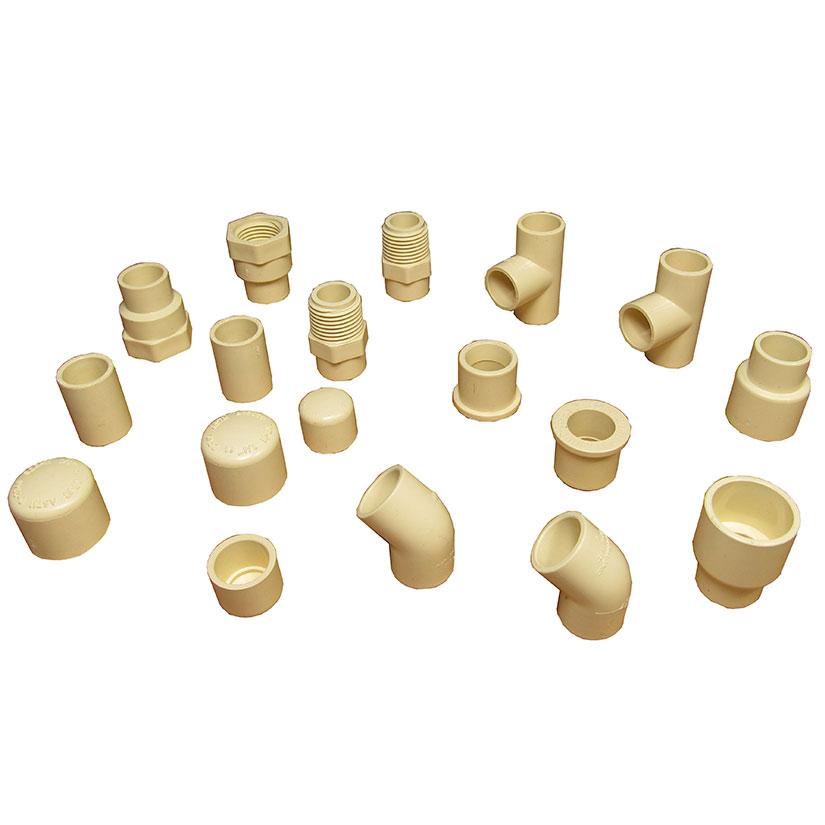
Oikeiden CPVC-liittimien valitseminen kuumavesijärjestelmiin
Oikeiden liittimien valinta tekee suuren eron lämminvesivaraajien asennuksessa. Ihmisten tulisi etsiä tuotteita, jotka kestävät ja pitävät veden turvassa. Tässä on muutamia tärkeitä asioita, jotka kannattaa ottaa huomioon:
- Korroosionkestävyys auttaa liittimiä kestämään pidempään, vaikka vesi olisi mineraalipitoista tai pH-arvossa tapahtuisi muutoksia.
- Vahva kemikaalienkestävyys suojaa kloorilta ja muilta desinfiointiaineilta, joten putket eivät hajoa.
- Korkea lämpötilansietokyky tarkoittaa, että liittimet kestävät jopa 93 °C:n (200 °F) kuumaa vettä vikaantumatta.
- Kevyet liittimet helpottavat asennusta ja vähentävät virheitä.
- Liittimien sisällä olevat sileät pinnat auttavat estämään kalkin kertymistä ja pitävät veden virtauksen hyvänä.
- Minimaalinen huolto säästää aikaa ja rahaa vuosien varrella.
Ihmisten tulisi myös tarkistaa tärkeät sertifikaatit. NSF-sertifiointi osoittaa, että liittimet ovat turvallisia juomavedelle. Etsi standardeja, kuten NSF/ANSI 14, NSF/ANSI/CAN 61 ja NSF/ANSI 372. Nämä todistavat, että liittimet täyttävät terveys- ja turvallisuusmääräykset.
Asennusvinkkejä vuotamattomaan toimintaan
Hyvä asennus auttaa estämään vuotoja ja pitää järjestelmän vahvana. Tässä on joitakin ohjeita:
- Leikkaa putki hienohampaisella sahalla tai laikkaleikkurilla. Vältä räikkäleikkureiden käyttöä vanhoissa putkissa.
- Poista purseet ja viistä putken päät. Puhdista pinnat liasta ja kosteudesta.
- Levitä paksu, tasainen kerros liuotinsementtiä putkeen ja ohut kerros liitoksen sisäpuolelle.
- Työnnä putki liittimeen kevyesti kiertämällä. Pidä sitä paikallaan noin 10 sekuntia.
- Tarkista, että sauman ympärillä on tasainen sementtivana. Jos sitä puuttuu, tee sauma uudelleen.
Vinkki: Jätä aina tilaa putkille laajenemiseen ja supistumiseen lämmön vaikutuksesta. Älä käytä ripustimia tai hihnoja, jotka puristavat putkea liian tiukasti.
Ihmisten tulisi välttää kuiva-asennusta ilman sementtiä, väärien työkalujen käyttöä tai yhteensopimattomien materiaalien sekoittamista. Nämä virheet voivat aiheuttaa vuotoja tai vaurioita ajan myötä. Huolellinen työ ja oikeat tuotteet auttavat lämminvesijärjestelmiä kestämään vuosia.
CPVC-liittimet auttavat ihmisiä ratkaisemaan käyttöveden putkiongelmia pysyvästi. Ne muodostavat vuotamattomat liitokset, kestävät korkeita lämpötiloja eivätkä ruostu. Käyttäjät säästävät rahaa korjauksissa ja työvoimassa. Monet kodit ja yritykset luottavat näihin liittimiin, koska ne kestävät vuosikymmeniä ja pitävät vesijärjestelmät turvallisina.
- Vuotamattomat liitokset ilman hitsausta
- Korkea lämpötilan ja korroosionkestävyys
- Pienemmät korjaus- ja työvoimakustannukset
Usein kysytyt kysymykset
Kuinka kauan PNTEKin CPVC-liittimet kestävät?
PNTEKCPVC-liittimetvoivat kestää yli 50 vuotta. Ne pysyvät vahvoina ja turvallisina vuosikymmeniä, jopa lämminvesijärjestelmissä.
Ovatko CPVC-liittimet turvallisia juomavedelle?
Kyllä, ne täyttävät NSF- ja ISO-standardit. Nämä liittimet pitävät veden puhtaana ja terveellisenä kaikille.
Voiko joku asentaa CPVC-liittimiä ilman erikoistyökaluja?
Useimmat ihmiset voivat asentaa ne perustyökaluilla. Prosessi on yksinkertainen eikä vaadi hitsausta tai juottamista.
Julkaisuaika: 18.7.2025


